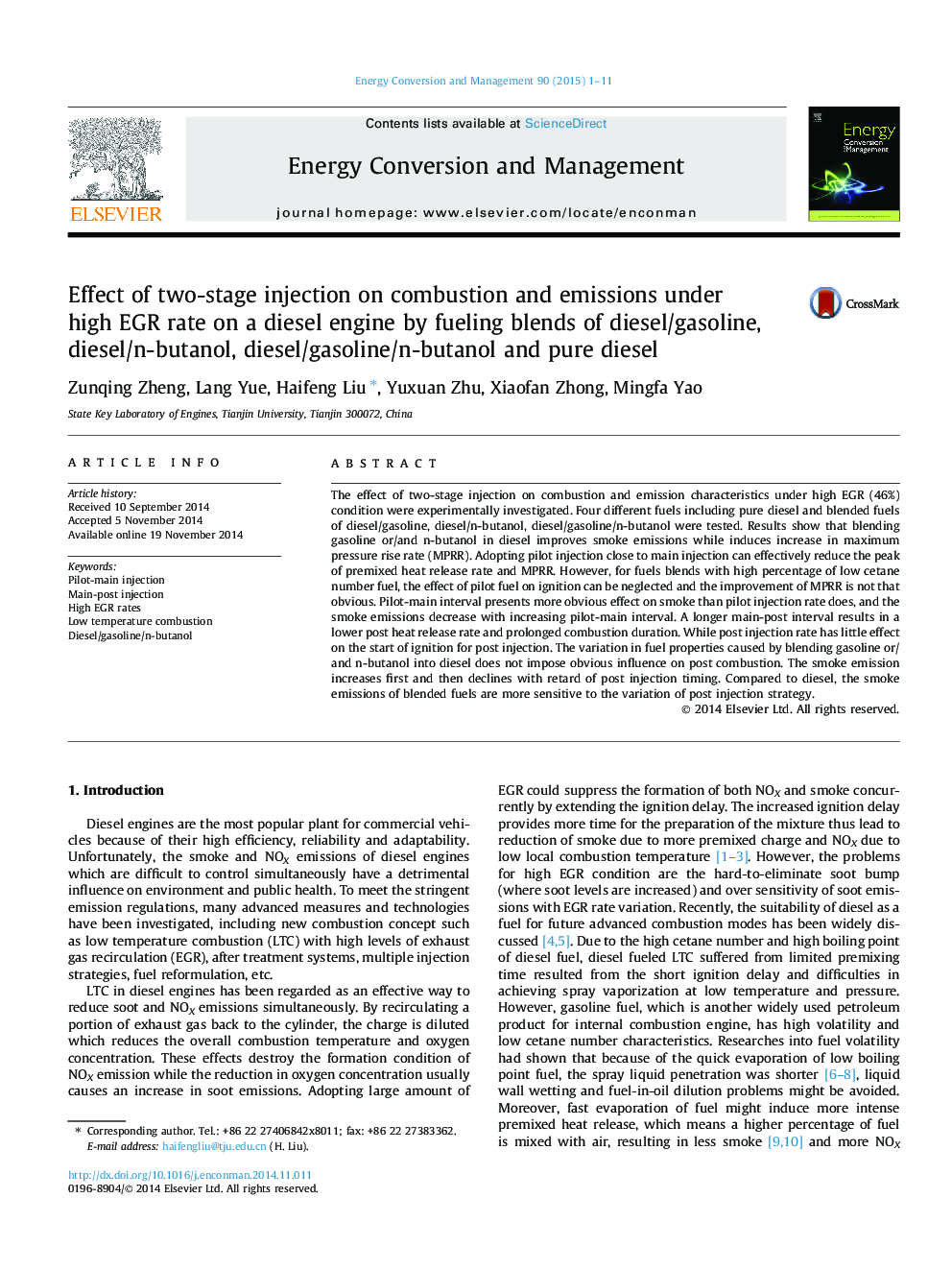| Article ID | Journal | Published Year | Pages | File Type |
|---|---|---|---|---|
| 771818 | Energy Conversion and Management | 2015 | 11 Pages |
•Two-stage injection using diesel blended fuel at high EGR (46%) was studied.•Blending fuels induce retarded pilot heat release & have less effect on MPRR.•Effects of injection parameters of blended fuels on emissions are similar to diesel.•Different fuels have little influence on post combustion heat release.•Small quantity post injection close to main results in better efficiency & emissions.
The effect of two-stage injection on combustion and emission characteristics under high EGR (46%) condition were experimentally investigated. Four different fuels including pure diesel and blended fuels of diesel/gasoline, diesel/n-butanol, diesel/gasoline/n-butanol were tested. Results show that blending gasoline or/and n-butanol in diesel improves smoke emissions while induces increase in maximum pressure rise rate (MPRR). Adopting pilot injection close to main injection can effectively reduce the peak of premixed heat release rate and MPRR. However, for fuels blends with high percentage of low cetane number fuel, the effect of pilot fuel on ignition can be neglected and the improvement of MPRR is not that obvious. Pilot-main interval presents more obvious effect on smoke than pilot injection rate does, and the smoke emissions decrease with increasing pilot-main interval. A longer main-post interval results in a lower post heat release rate and prolonged combustion duration. While post injection rate has little effect on the start of ignition for post injection. The variation in fuel properties caused by blending gasoline or/and n-butanol into diesel does not impose obvious influence on post combustion. The smoke emission increases first and then declines with retard of post injection timing. Compared to diesel, the smoke emissions of blended fuels are more sensitive to the variation of post injection strategy.
